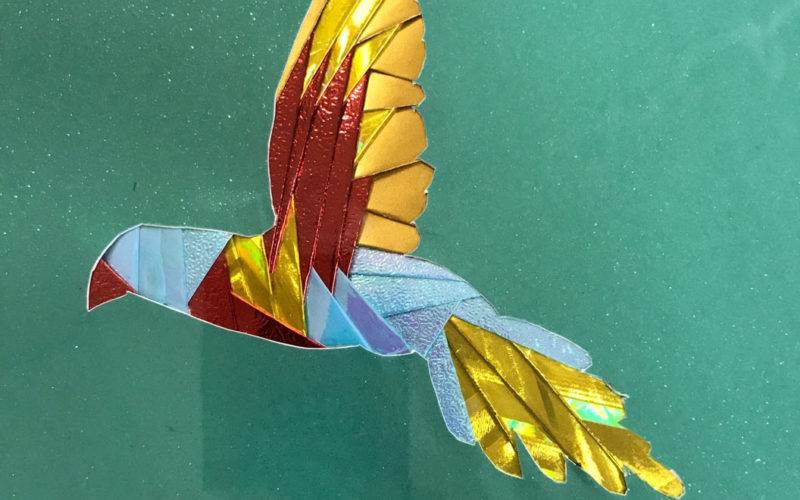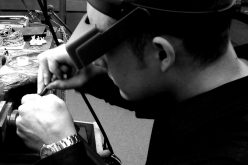“I would be the wind
“Free to move about.
“You could find me over the oceans
“Rocking the waves.
“Over the mountains,
“Cutting through the crevices.
“Racing through the forest
“Bumping up against the leaves on tropical trees.
“Like the wind
“I would twist and run…
“Scream
“Or be still.”
Walk into your bathroom and close the door, Kathy McGregor says. Imagine there’s no tub, but a cot instead. The vanity counter is replaced by a small writing desk and a straight-backed chair. There’s no window — and there’s no way out. This is where you live — eat, sleep, wait — 23 hours a day, seven days a week. You have no friends, and chances are, your family has long since slipped away. After all, you’re on Death Row.
For years, McGregor has been the catalyst behind the Prison Story Project, a workshop through which poets and playwrights help incarcerated men and women tell their stories. She started it with a “there but for the grace of God” mindset: She came from a family she describes as “very dysfunctional and violent,” and “part of me doesn’t understand why I’m not dead or in prison myself.”
Storytelling and music, she says, changed — and perhaps saved — her life. And “to whom much is given, much will be required.”
“When we go into women’s prison, I hear my story all over again,” she says.
But going to Death Row was a completely different kind of experience, and the relationships formed there continue to shape McGregor’s life. Inspired by Bryan Stevenson’s book, Just Mercy: A Story of Justice and Redemption, published in 2014, McGregor began to lay the foundation to get into Varner, the super-max unit of the Arkansas Department of Corrections. In April 2016, she was granted “unprecedented access.”
“Imagine an airplane aisle, but instead of seats on both sides, there are cages,” McGregor says. “And in every other cage — because they can’t be next to each other — is an inmate.”
The men arrived one at a time, each in full shackles, she remembers, escorted by at least two guards. Once in the cells, all their shackles were removed — and McGregor had the opportunity to convince them that she had something to offer them with a writing project that would become a script-in-hand performance. Not surprisingly, the first comment she heard was: “We know what’s in it for you. But what’s in it for us?”
“It stings a little that they thought we came to use them in some way,” McGregor muses. “But they’ve been used a thousand times over. And over the years, I’ve learned there’s nothing I can do in that moment to convince them to trust me. I just have to keep showing up.”
She did. And the nine inmates who participated pushed back every chance they got. Over the course of one Saturday visit a month for six months, they kept saying the same thing: “You’ve never met nobody like us.”
McGregor kept showing up anyway, and in October, she brought with her six actors and a musician, who performed in that same narrow space between the cells.
“Thank you for reminding me what it feels like to be human,” one inmate wrote.
“We are the broken ones, that with your help were patched up to shine like new,” wrote another.
“Through one another’s writings, we could see the real person, the true human being,” wrote a third. “It felt so wonderful doing something worthy, something bigger than any one of us.”
The resulting staged reading has been presented many places in the four-state area of Kansas, Oklahoma, Texas and Arkansas, including juvenile detention centers where the youngsters also received letters from the inmates on Death Row. The performance in Wichita, Kan., was filmed and will debut at 6 p.m. Feb. 6 at St. Paul’s Episcopal Church in Fayetteville, but it won’t be the only opportunity viewers will have to get to know the men of Death Row. An exhibit of some 43 artworks is also on show at St. Paul’s, created by some of those men. This time, McGregor’s inspiration came from an inmate named Kenneth Reams, who has been on Death Row since 1993. In solitary confinement all those years, Reams has become not just a poet but a talented and prolific artist. And now McGregor has been given the opportunity to share some of other inmates’ work.
“Art wasn’t part of my life until recently,” writes one. “I started doing art out of necessity and peace of mind, from being locked up in solitary confinement for 23 to 24 hours a day for over 26 years. Only allowed the bare minimum of materials to work with which include 10 2-ounce bottles of paint, 10 paint brushes, paper canvases, glue, Popsicle sticks and emery boards as sandpaper.” One of his works is titled “Shoes”: “These shoes represent all of the inner-city kids that have died too young,” he writes. Another depicts the Clotilda, “the last slave ship to land on American soil.”
The artworks are for sale, which McGregor admits might surprise viewers. But everything in prison except room and board — everything from snacks to those art supplies — costs the inmates money, which they can keep in a commissary account. McGregor often puts money into those accounts herself, but selling their art gives the artists a chance to have that tiny bit of freedom.
McGregor says whenever she talks about the men on Death Row, she steels herself for the response. The public judges them harshly, she says. “There’s usually no way for the public to see anything but what their crime was.” But after seeing the performance, audience members often comment that the play impressed on them the humanity of those depicted.
McGregor was herself a victim of violent crime many years ago in Memphis, Tenn., marched into her own backyard and forced to kneel on the ground with a gun to her head.
“But what was scarier was when I saw his eyes,” she remembers, visibly shuddering. “There was nobody home, no soul, no way to reason with him.
“What I know about looking in the eyes of the men on Death Row is after all those years, their souls have returned.”
“Jesus told his followers to visit people in prison. They are human beings, beloved by God, just like the rest of us,” says the Rev. Evan D. Garner, rector of St. Paul’s. “The Prison Story Project gives voice to those who have been cut off from society in order that their basic humanity may not disappear from our minds. Their humor, struggle, love and hope lives among us in these staged readings. The people of St. Paul’s believe that this work is essential to who we are as people of faith.”
It’s become essential for McGregor, too.
“I used to be adamant this was not a prison ministry, it was a storytelling project,” she says. “Now I’m adamant it is a prison ministry.”
She’s so adamant that she’s in seminary with plans to graduate in June.
“What I didn’t expect about the Death Row project was how those men would stay with me in my life,” she says. “Now I have to stay with them.”
BECCA MARTIN-BROWN
bmartin@nwadg.com
__
FAQ
‘Framed: The Art of Men on Death Row’
WHEN — Through Feb. 19
WHERE — Parish Hall at St. Paul’s Episcopal Church in Fayetteville
INFO — prisonstoryproject.com
BONUS — A reception begins at 6 p.m. Feb. 6, followed by the premiere of the filmed version of “On the Row: Stories from Men Incarcerated on Arkansas’ Death Row” at 7:30 p.m.










